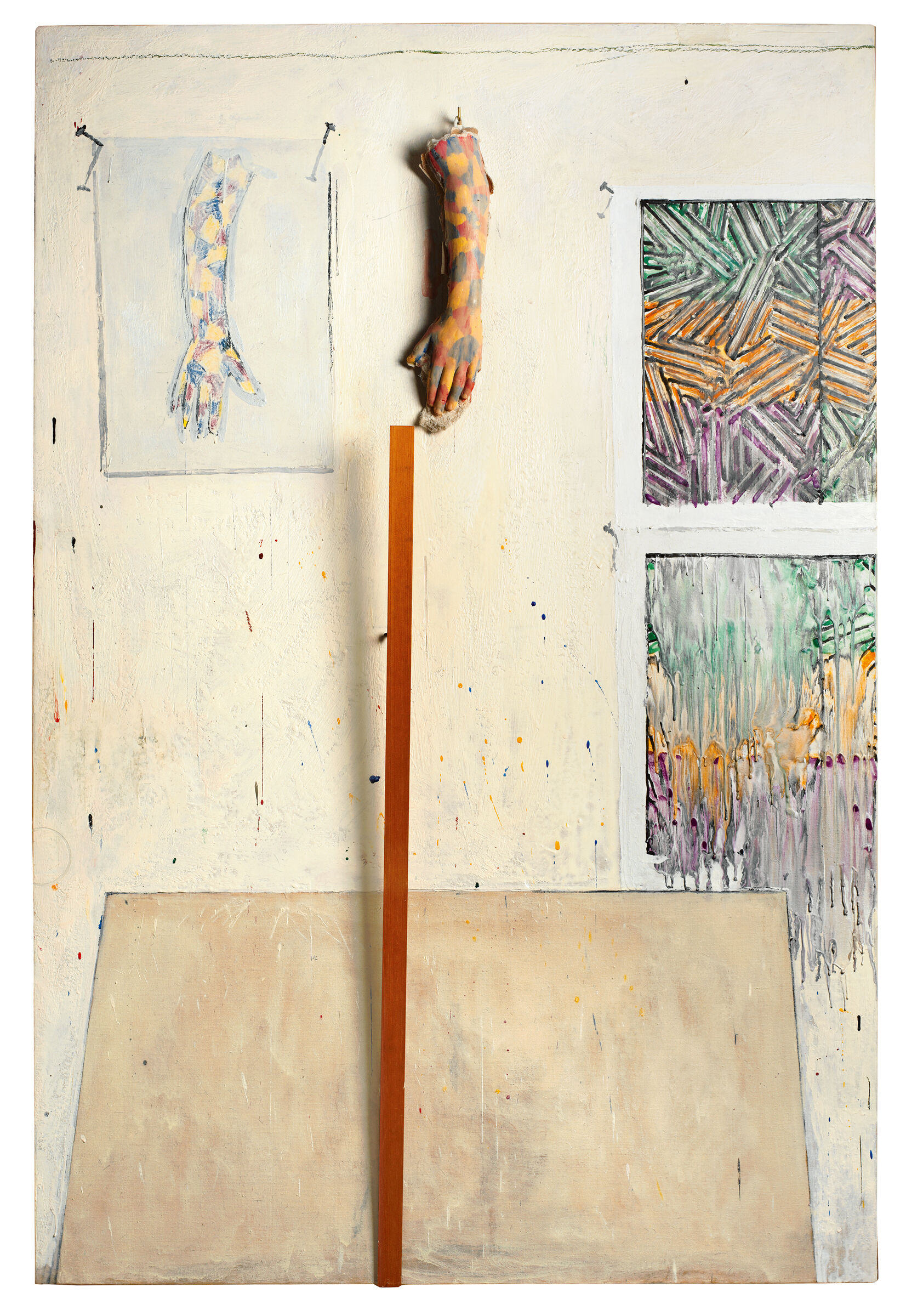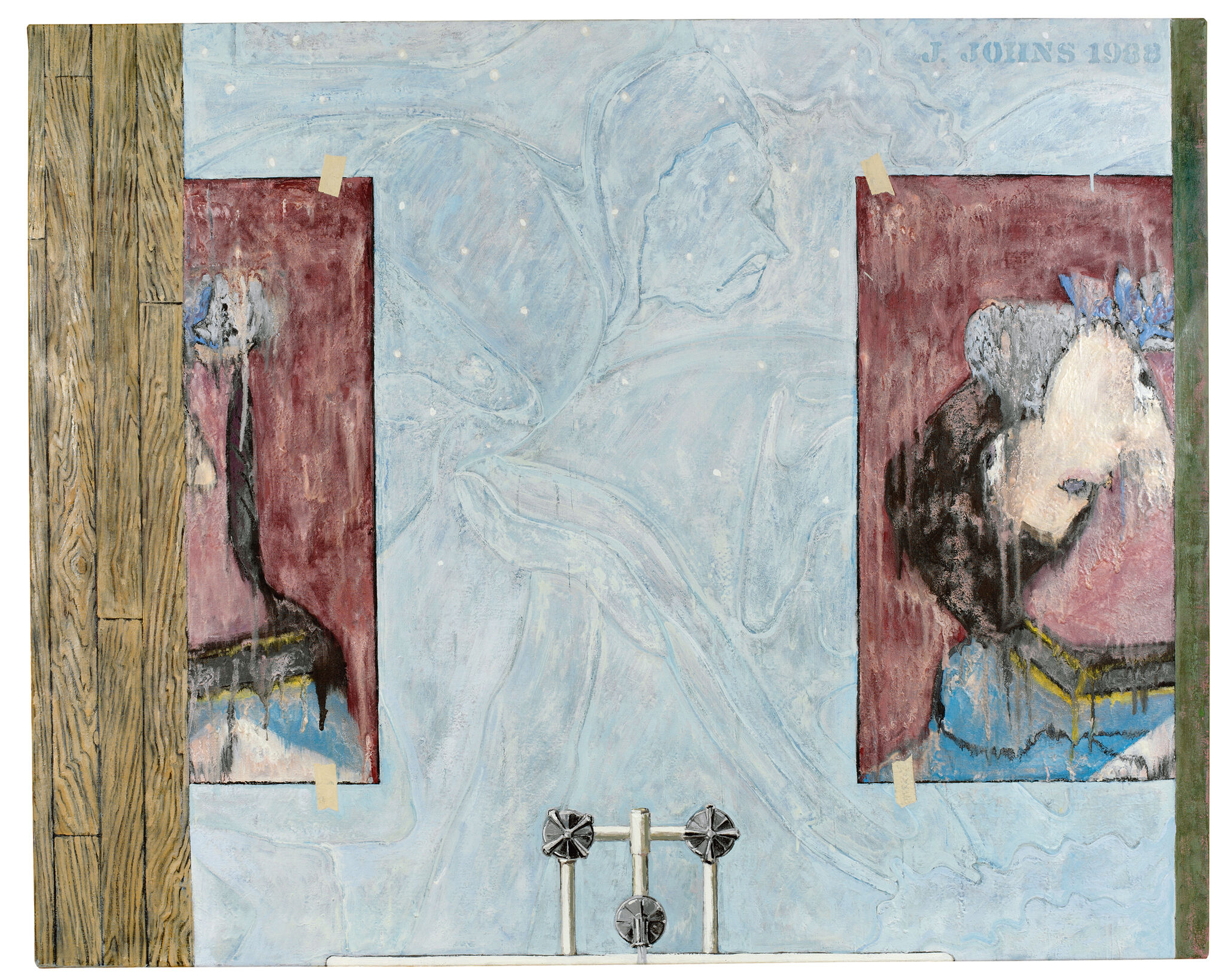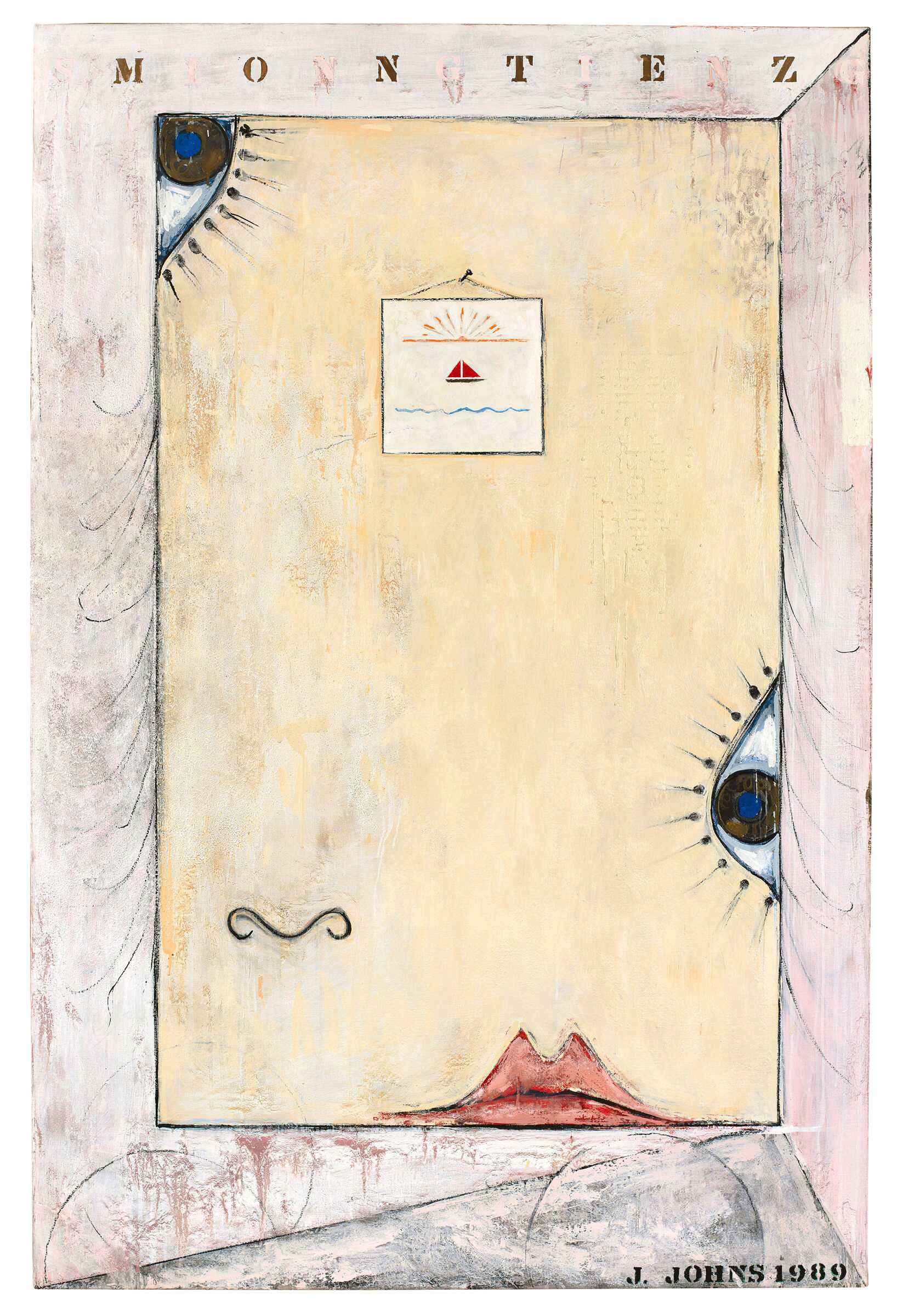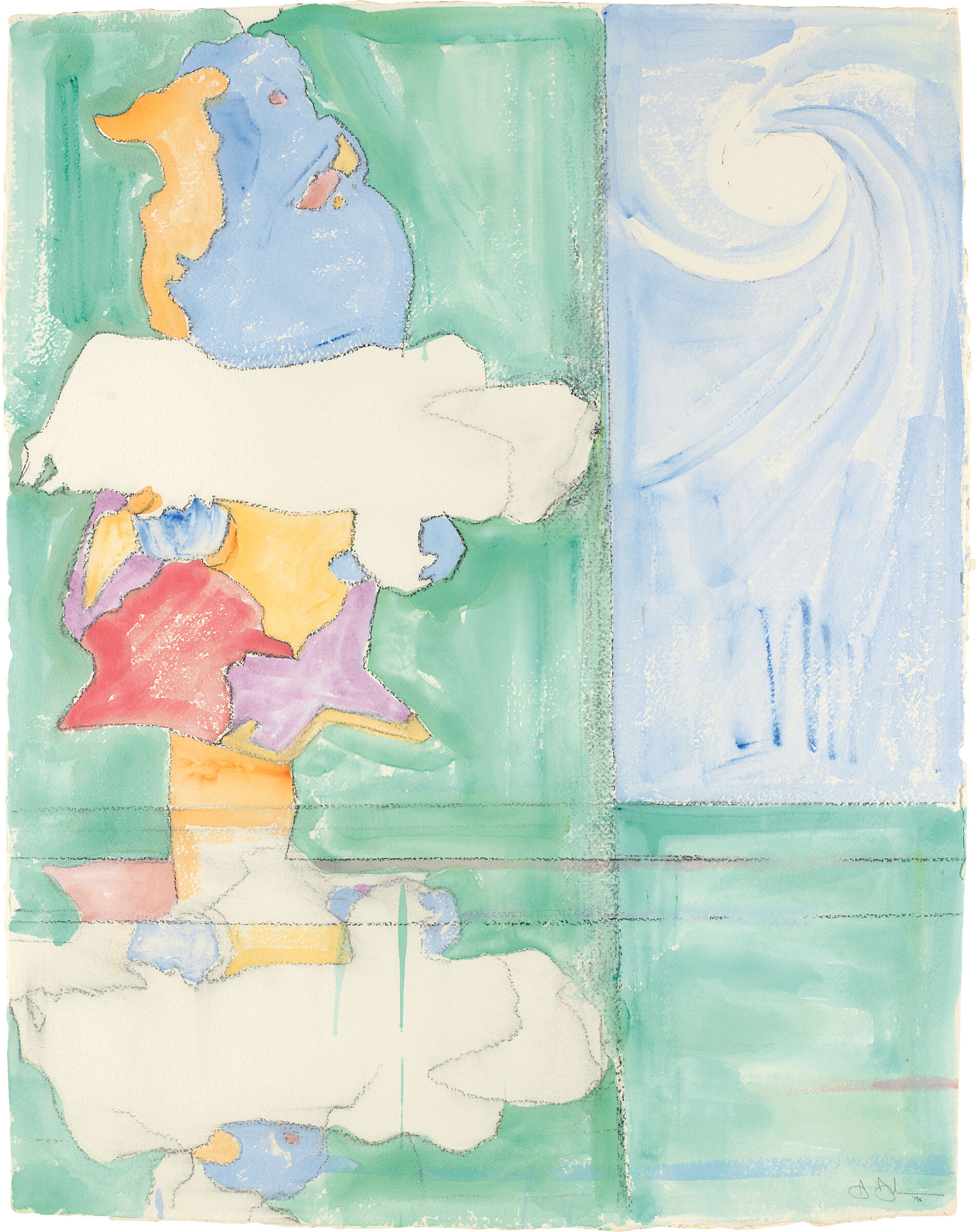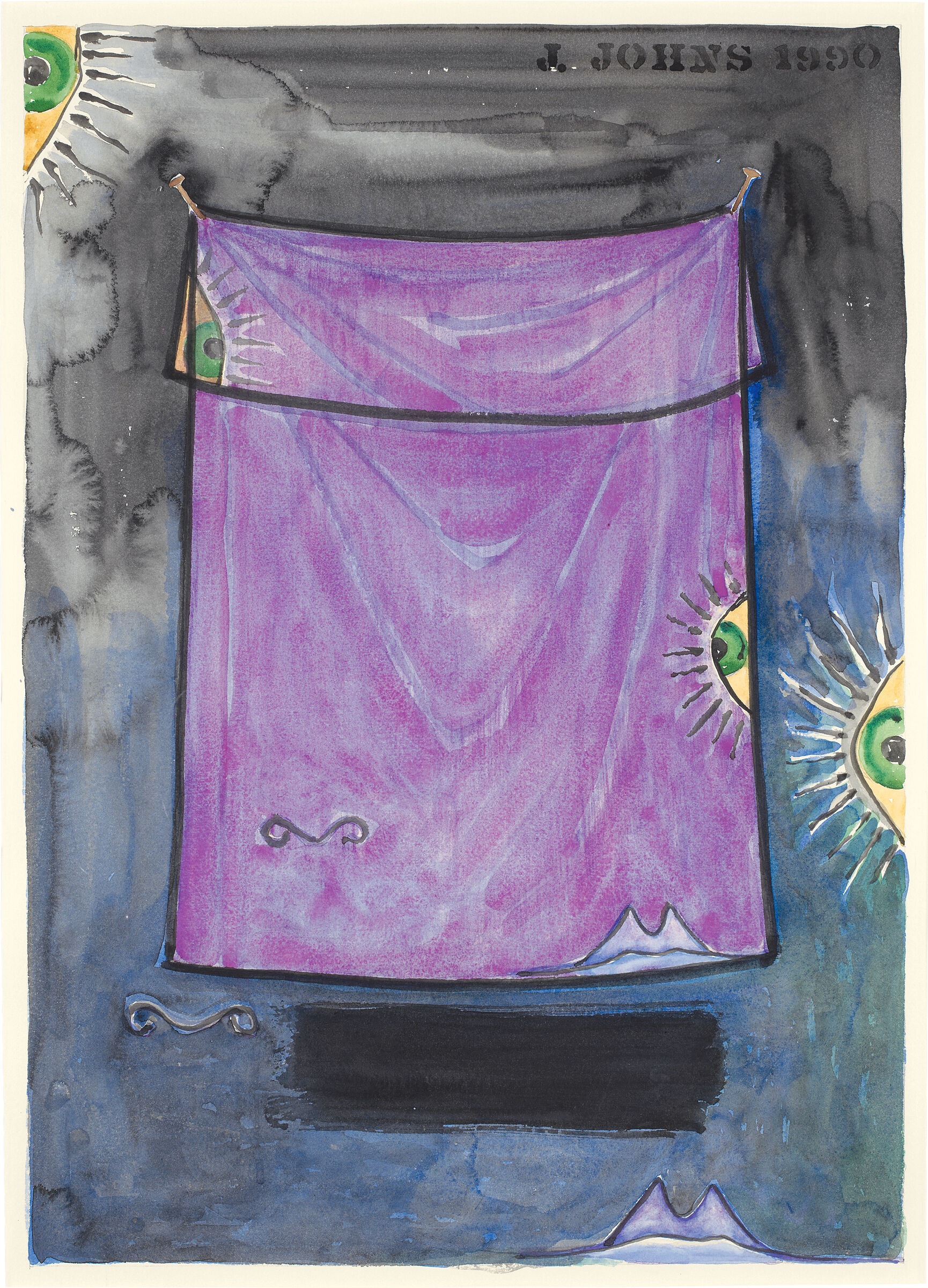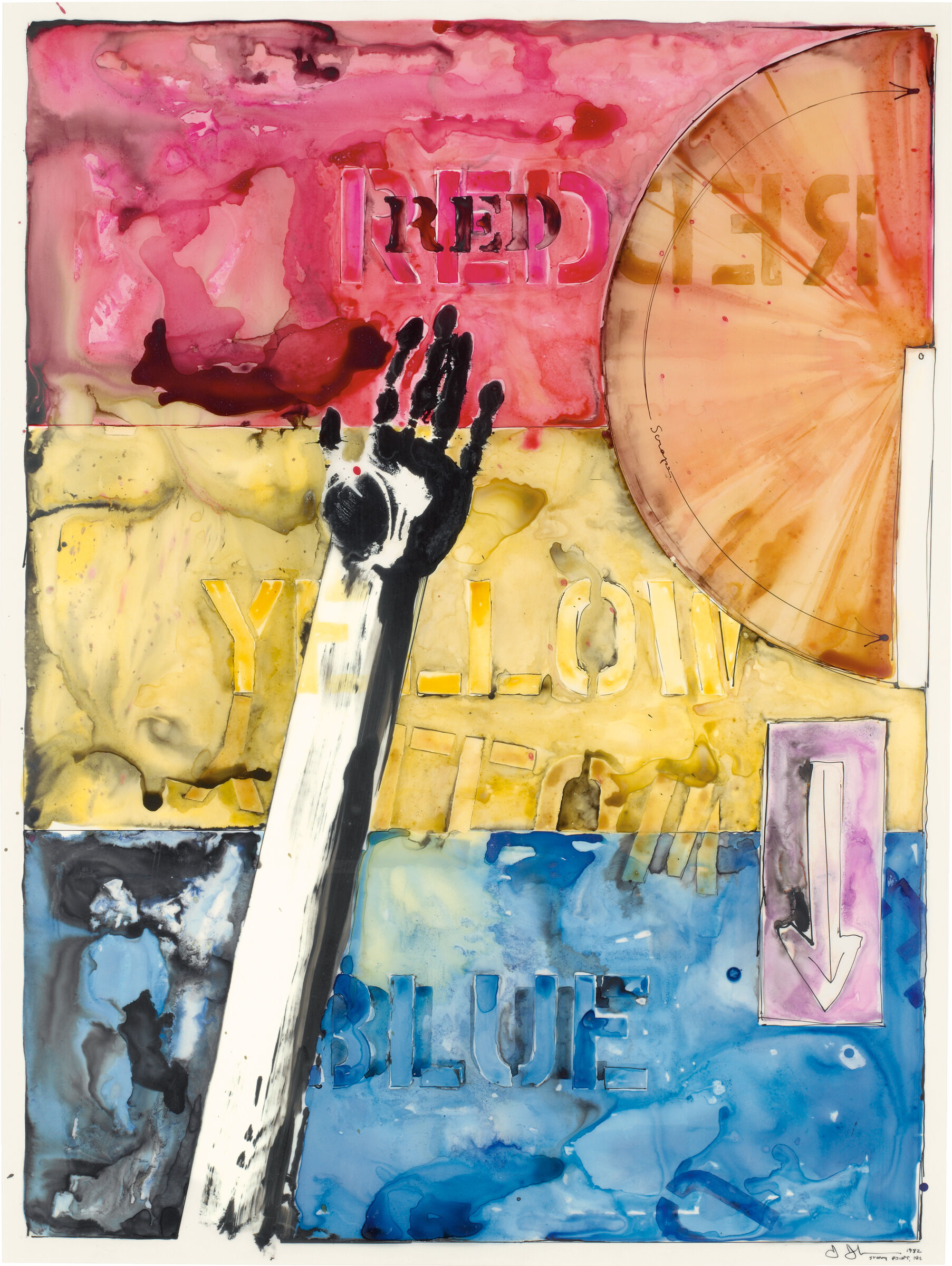Jasper Johns: Mind/Mirror | Art & Artists
Sept 29, 2021–Feb 13, 2022
Jasper Johns: Mind/Mirror | Art & Artists
Dreams
10
After a decade spent primarily exploring abstract crosshatches, during the 1980s and 1990s Jasper Johns flooded his work with a profusion of perplexing new imagery, often in surreal combinations. Unlike his earlier use of found objects and common motifs, his new images derived from disparate art histories, popular sources, and his immediate surroundings and imagination. Some featured fragmented and distorted body parts, including the eyes from a 1936 painting by Picasso of his lover, which appear in many works throughout this room. Johns also frequently employed a mysterious craggy silhouette that he dubbed the Green Angel after the 1990 painting where it first appeared. He refused to identify the source of this image, as he had in his other tracings, so that its meaning remained open to the viewer’s interpretation.
For the first time in his painting, Johns rendered images and objects in space rather than imprinting or flatly transposing them edge-to-edge on a canvas. Perspectival illusion, along with shading, creates a newfound sense of depth and three-dimensionality. As in a dream, images pile up, float, drift, and dissolve in spaces that straddle the real and the fantastical. Pale palettes and luminous materials, such as watercolor and pastel, contribute to the ethereal atmosphere. If Johns’s earlier work invited analytical puzzling, his hybrid compositions from this time conjure a realm of irrational symbolic association, heightened emotion, and reverie.
The corresponding gallery at the Philadelphia Museum of Art focuses on darker, nightmarish visions.

